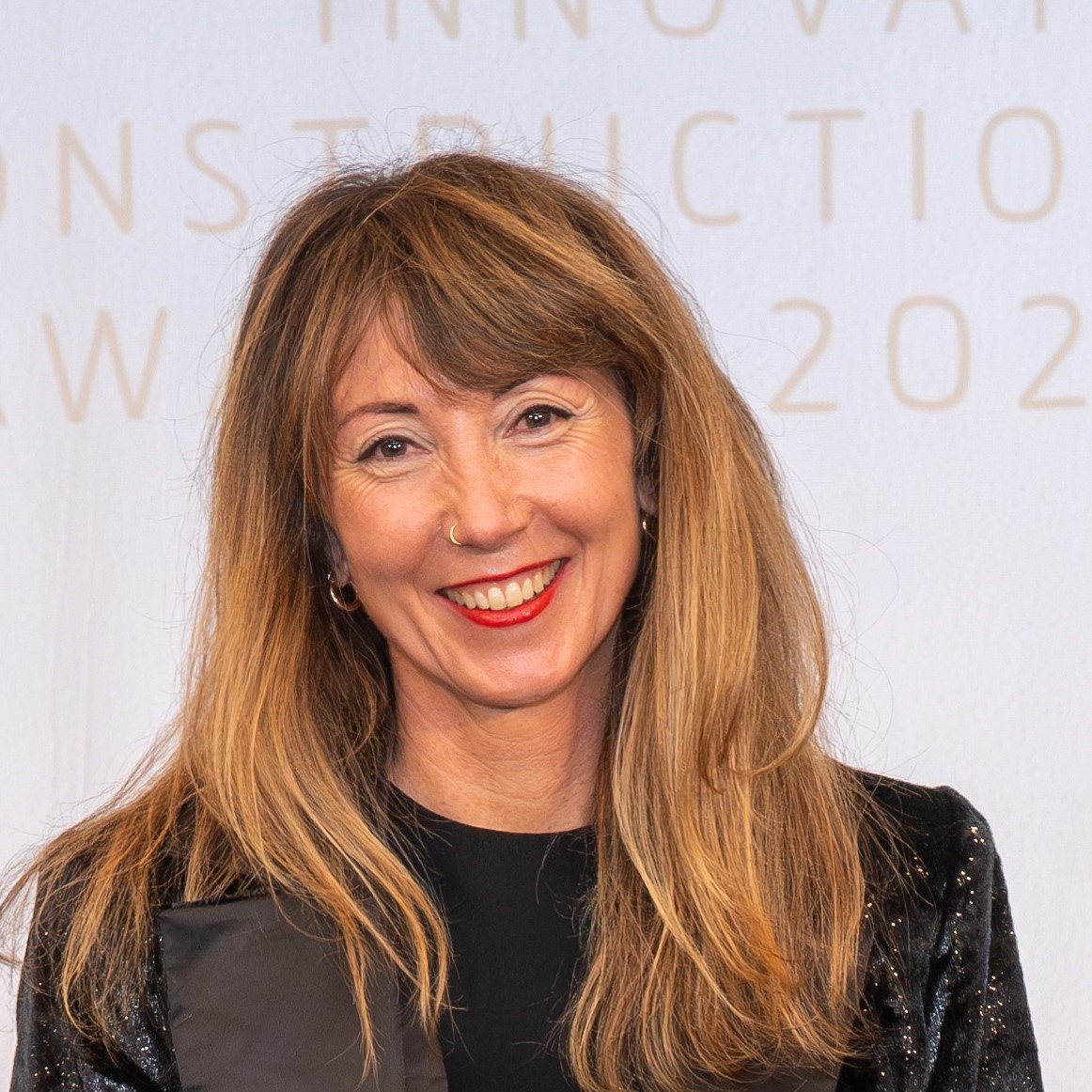A power station transformed into a culture centre, a palace that becomes a museum or military barracks turned into a university campus. These are some of the projects in which Ferrovial Agroman has given new life to buildings and spaces, combining respect for artistic value with concepts such as efficiency or mobility.
Gregorio se despierta a las seis de la mañana con el repique de campanas de la Iglesia de San Cayetano. A tientas coge una caja de cerillas de la mesita de noche y enciende la lámpara de gas. Sale del catre y arrastra sus pies hasta la única mesa que hay en la buhardilla. Con el agua ennegrecida que conserva en una palangana desde la noche anterior se asea. Se pone los pantalones, los calcetines, los zapatos, la camisa, un jersey lleno de remiendos y la chaqueta. En el bolsillo derecho se guarda se guarda la llave y en el izquierdo su almuerzo, dos rebanadas de pan y dos lonchas de queso. Sale de casa y en apenas veinte minutos llega a su lugar de trabajo. Gregorio es carbonero en la Central Eléctrica del Mediodía.
Si Gregorio pudiese viajar al futuro cien años y entrase de nuevo en la central se quedaría atónito. Ya no vería carboneras, ni generadores, ni turbinas. Contemplaría las fotografías, los cuadros y las esculturas de las exposiciones que en ese momento estuviese acogiendo CaixaForum Madrid. Porque aquella instalación que generaba la electricidad con la que se iluminó el centro de la capital de España a comienzos del siglo XX es ahora uno de los principales centros culturales de la ciudad.
Caixafórum Madrid constituye quizá el ejemplo más representativo de los trabajos de restauración y remodelación de edificios emblemáticos que Ferrovial Agroman ha realizado en los últimos años. Pero no es el único. Proyectos como el Museo Picasso de Málaga, el centro de ocio Platea de Madrid o la sede de la Universitat de les Illes Balears en Ibiza dan fe de las capacidades de la compañía a la hora de ejecutar los trabajos que den a espacios de distinta naturaleza un nuevo uso, en ocasiones radicalmente distinto al original. Otros, como la restauración de la Casa de la Panadería de la Plaza Mayor de Madrid o la remodelación del Palacio de San Telmo son un buen ejemplo de cómo Ferrovial Agroman es capaz de realzar edificios históricos, conjugando el respeto al valor artístico con conceptos modernos como la eficiencia o la movilidad.
Iluminando Madrid
Construida en 1899, la Central Eléctrica del Mediodía es uno de los pocos ejemplos de arquitectura industrial que aún se conservan en el casco histórico de Madrid. Hoy, convertida en la sede de CaixaFórum en la capital de España, podemos afirmar, en un sentido metafórico, que sigue iluminando la ciudad a través de las exposiciones, conferencias, conciertos y talleres.
El objetivo fundamental en el proyecto de transformación de este espacio, diseñado por los arquitectos Herzog & de Meuron, fue conectarlo directamente al Paseo del Prado, uno de los ejes culturales más importantes del mundo, y configurar una gran plaza en una zona de la ciudad especialmente congestionada. La conexión con el Paseo del Prado se consiguió al disponer del solar contiguo, entonces ocupado por una gasolinera, y la plaza se generó eliminando el zócalo de piedra sobre el que se asentaba el muro perimetral de la central, que, tras esta operación, quedó suspendido en el aire. ¿Arte de magia? No, ingeniería. Realmente la fachada histórica del edificio actualmente cumple la función de revestimiento de un cuerpo de nueva factura hecho de hormigón.
Caixafórum tiene una superficie de 10.000 metros cuadrados. La central tenía 2.000. En esto tampoco hubo truco: se creó nuevo espacio añadiendo dos niveles bajo rasante e incorporando un volumen superior revestido de chapa de función. La singularidad del edificio quedó coronada con la creación de un jardín vertical en uno de los laterales de la plaza.
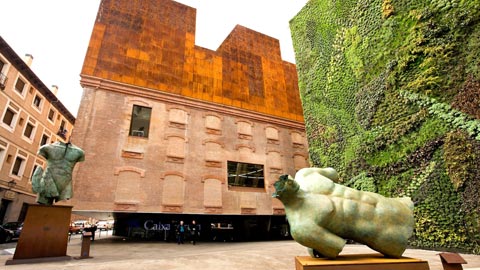
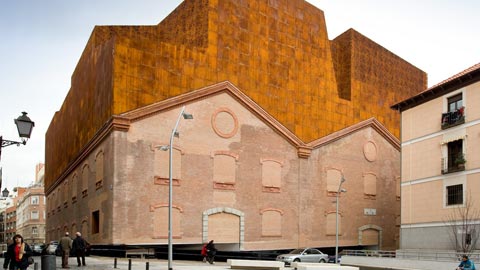
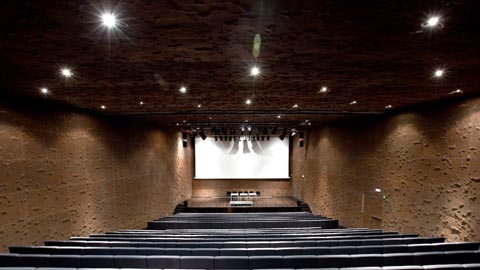
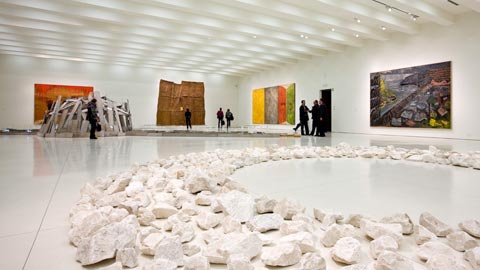
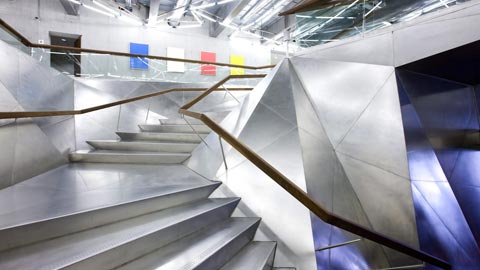
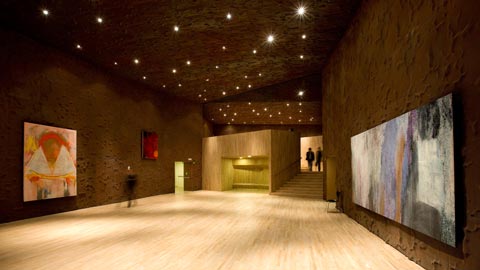
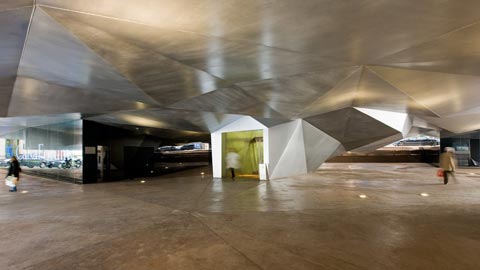
CaixaForum Madrid
Una casa para el hijo predilecto
Si la Central Eléctrica del Mediodía representaba la arquitectura industrial de finales del siglo XIX en Madrid, el Palacio de los Condes de la Buena Vista constituye el mejor ejemplo de arquitectura civil del siglo XVI de Málaga. Este edificio, de estilo renacentistas, fachada plateresca y elementos mudéjares es actualmente la sede del Museo Picasso de Málaga.
Para albergar las obras de uno de los hijos predilectos de la ciudad, el conjunto fue minuciosamente rehabilitado. Además, se restauraron y modificaron varios edificios adyacentes, que actualmente forman parte del museo.
En el palacio, la actuación más destacada fue el recalce de los muros, que tiene como objetivo fortalecer su estructura. En esta operación se recurrió a un sistema de micropilotaje, una solución que consiste en realizar perforaciones de unos treinta centímetros de diámetro e introducir una armadura metálica en cada una ellas para luego rellenarlas de mortero. Los micropilotes se unen con una viga, llamada viga de atado, que se adosa al muro. De este modo, la carga de los muros se transmite a las vigas, de éstas a los micropilotes y de éstos al terreno.
En el interior del edificio, el mayor desafío fue acondicionar las salas para que presentasen las condiciones de temperatura y humedad idóneas para acoger las colecciones. Además, este objetivo había que alcanzarlo sin afectar a los artesonados de madera. Se trataron las ventanas para evitar la entrada de calor y luz natural y, en los techos, el sistema de suministro de aire se integró dentro de los módulos de madera del artesonado.
En los edificios adyacentes, de distintas épocas, que se incorporaron al museo se respetaron los elementos de las fachadas. También se construyeron dos edificios de nueva planta para albergar las colecciones temporales y una sala subterránea para exponer los restos arqueológicos fenicios y romanos que se encontraron durante los trabajos.

Una residencia militar convertida en universidad
Que un palacio renacentista se transforme en un museo no causa demasiada sorpresa. Pero que un edificio militar se convierta en un edificio universitario puede resultar más llamativo.
En 1944 el coronel de ingenieros Luis Zaforteza proyectó una residencia “para oficiales y suboficiales solteros de los regimientos de infantería nº48 de Teruel y de artillería nº23 de Ibiza”. Después de varios usos castrenses, se abandonaría en el año 2000.
Una década más tarde, en 2010, comenzaron los trabajos para convertir el edificio en sede en Ibiza de la Universitat de les Illes Balears. El proyecto respetó la configuración de las fachadas y las cubiertas, que se rehabilitaron íntegramente. El interior se liberó para mejorar la iluminación natural y determinar los espacios que ocuparían las aulas. Se construyeron además dos plantas en la explanada frontal, por debajo del nivel del edificio, que quedaron conectadas con éste a través de un sótano. En 2012 el complejo recibió a sus primeros alumnos.
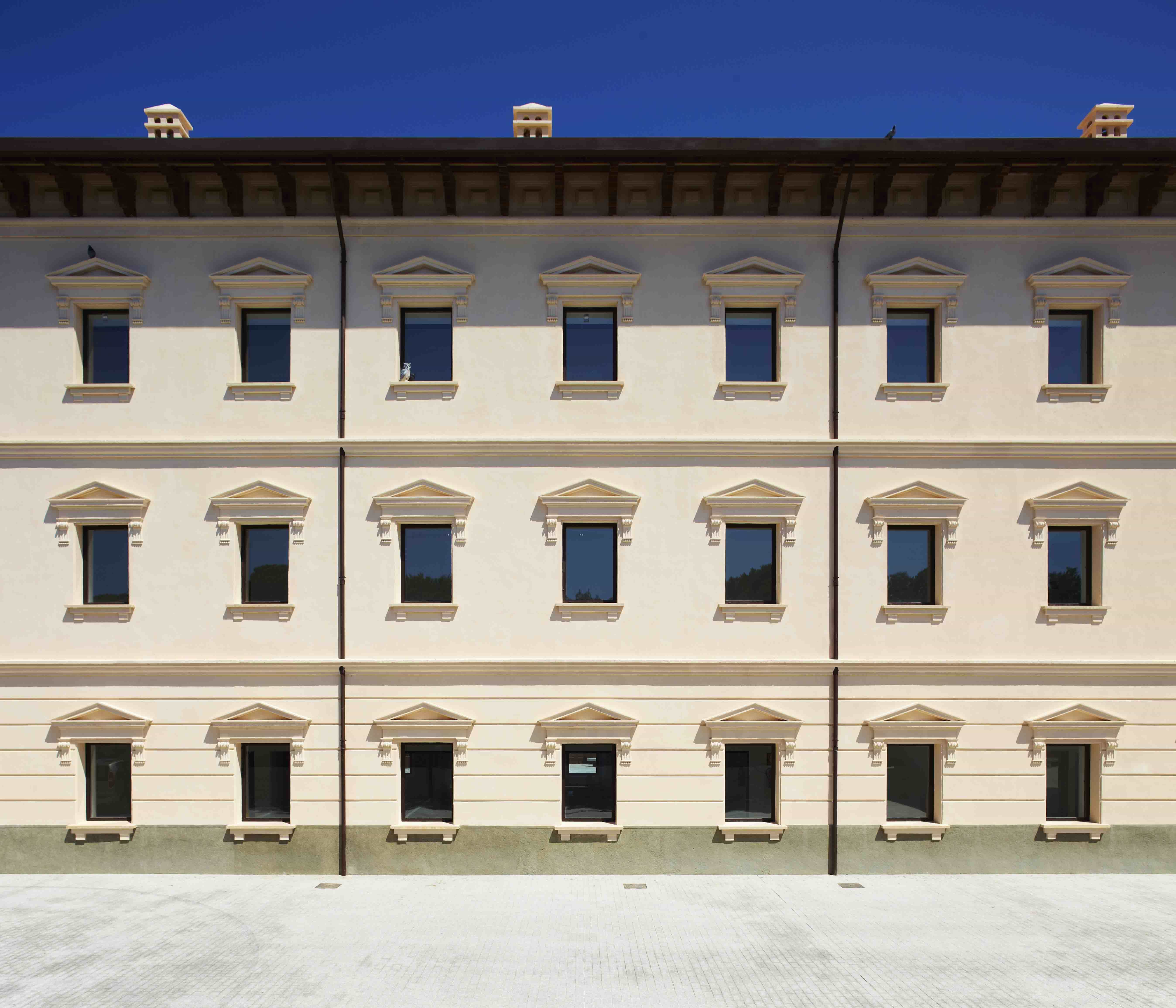
Nuevo ocio
En 1946 finalizó la construcción del complejo Carlos III, situado al inicio de la madrileña Calle Goya. El proyecto combinaba viviendas, una galería comercial, un cine y una sala de fiestas. El cine, a diferencia de otras grandes salas, carecía de fachada a la calle: se accedía a él a través del centro comercial.
Por esa razón, en 2013, los transeúntes que pasaban por esta zona de Madrid apenas podían percibir la transformación que estaba experimentando la sala. El cine Carlos III se convirtió en Platea, un espacio de 5.800 metros cuadrados que constituye el mayor centro de ocio gastronómico de Europa.
El proyecto incluyó la reestructuración parcial, el acondicionamiento y restauración del espacio, respetando su forma original y los elementos protegidos. Con un recubrimiento de madera clara se potenció la zona que ocupaba la pantalla y en la que ahora se levanta un escenario en torno al que se organizan el resto de espacios. La oferta gastronómica se distribuye entre los antiguos palcos, el patio y el foso.
Palacio de San Telmo
Otro de los palacios que Ferrovial Agroman ha rehabilitado para darle un nuevo uso es el sevillano Palacio de San Telmo. En 1989 el Arzobispado de Sevilla lo cedió a la Junta de Andalucía para ser la sede del gobierno autonómico. En 1991 se realizó una primera restauración y en el año 2000 comenzó la segunda fase del proceso, liderada por Ferrovial Agroman.
La historia del Palacio de San Telmo, uno de los mejores ejemplos del barroco civil sevillano, abarca más de tres siglos. Su construcción se inició en 1682 como Colegio de la Universidad de Mareantes de Sevilla. A mediados del siglo XIX fue transformado en residencia de los duques de Montpensier y después fue habilitado como Seminario Metropolitano de Sevilla. Este último uso afectó seriamente a la configuración su forma y tipología.
El proyecto de rehabilitación ejecutado por Ferrovial Agroman tuvo como objetivo recuperar la estructura original del palacio. Fue necesario demoler el interior del edificio con la excepción de la crujía principal, el patio central y la capilla. Los muros perimetrales se mantuvieron.
La actuación más significativa se desarrolló en el sector sur, en el que se recuperó la disposición no simétrica de patios de la traza original. Uno de ellos había desaparecido y fue necesario reconstruirlo a partir de los retos existentes. Otro, mutilado, recobró sus dimensiones originales. Se construyeron otros dos de nueva planta. Asimismo se transformaron estancias de gran calidad arquitectónica como la capilla, la sacristía la enfermería o la cripta abovedada para asumir usos públicos como salones de actos y exposiciones.
Los jardines también fueron objeto de un intenso trabajo de reforma. El conjunto se concibió como un jardín de jardines, creando distintos espacios. El cerramiento físico se cubrió de vegetación y se construyó una pérgola de gran magnitud como nuevo acceso al palacio desde los jardines.
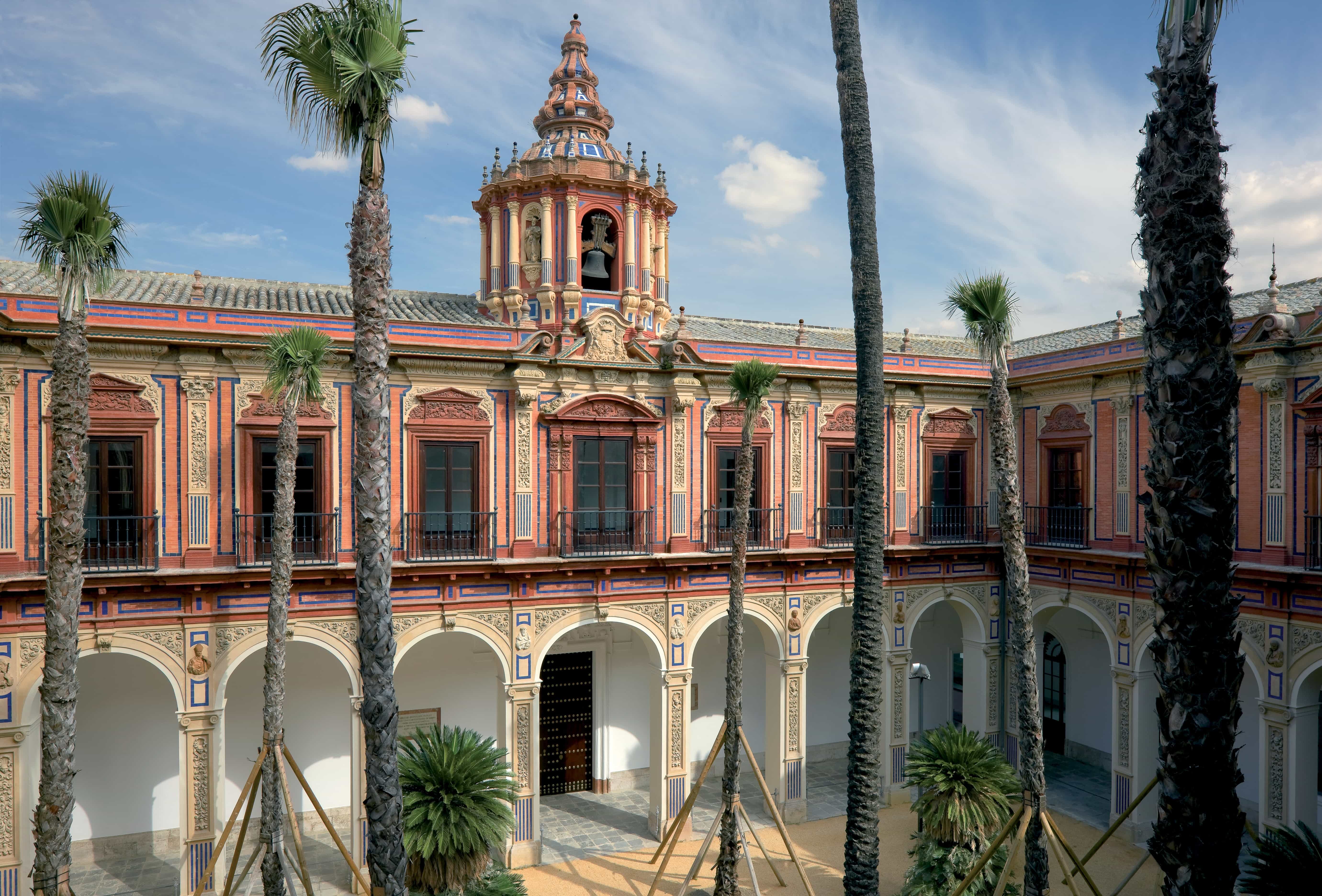
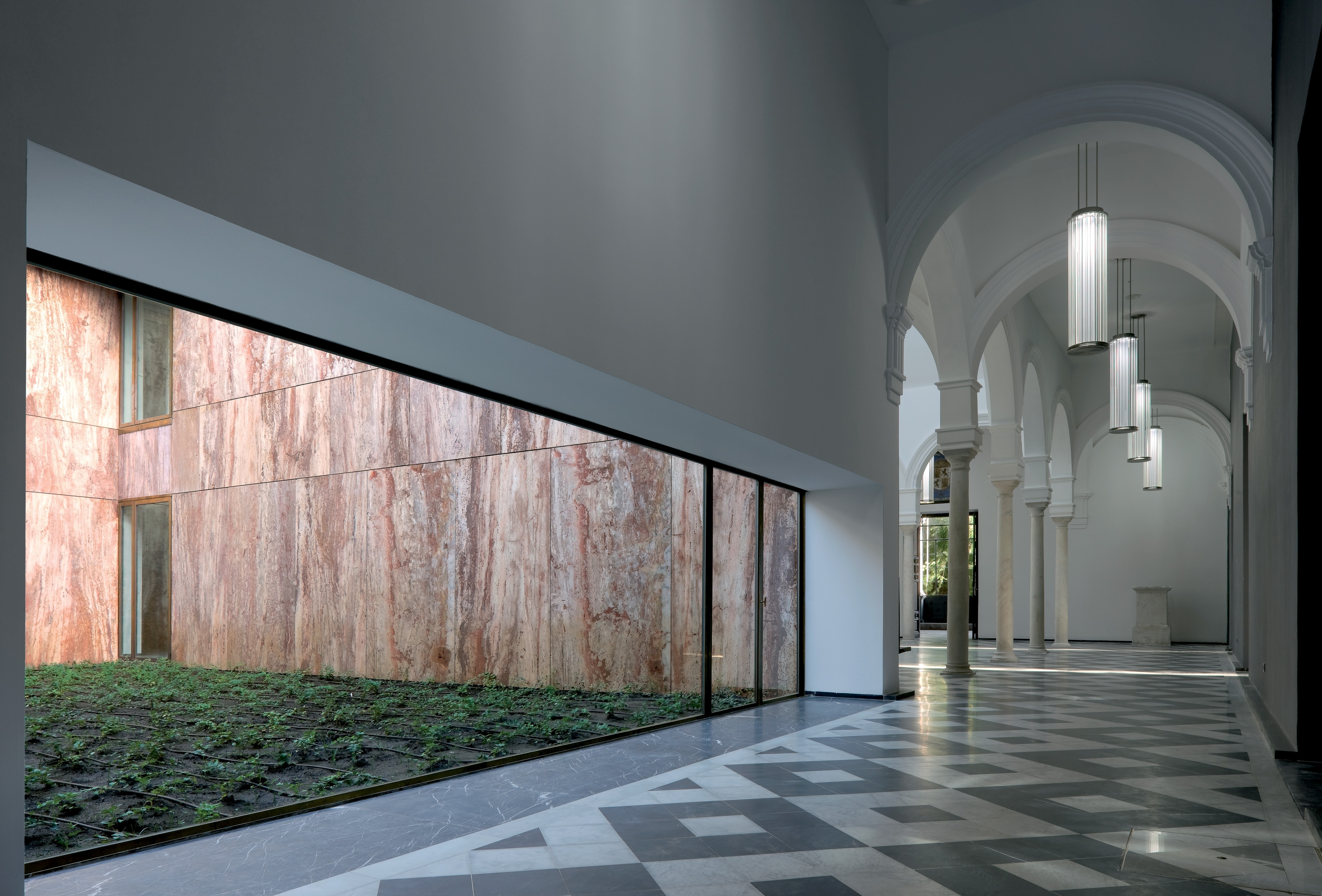
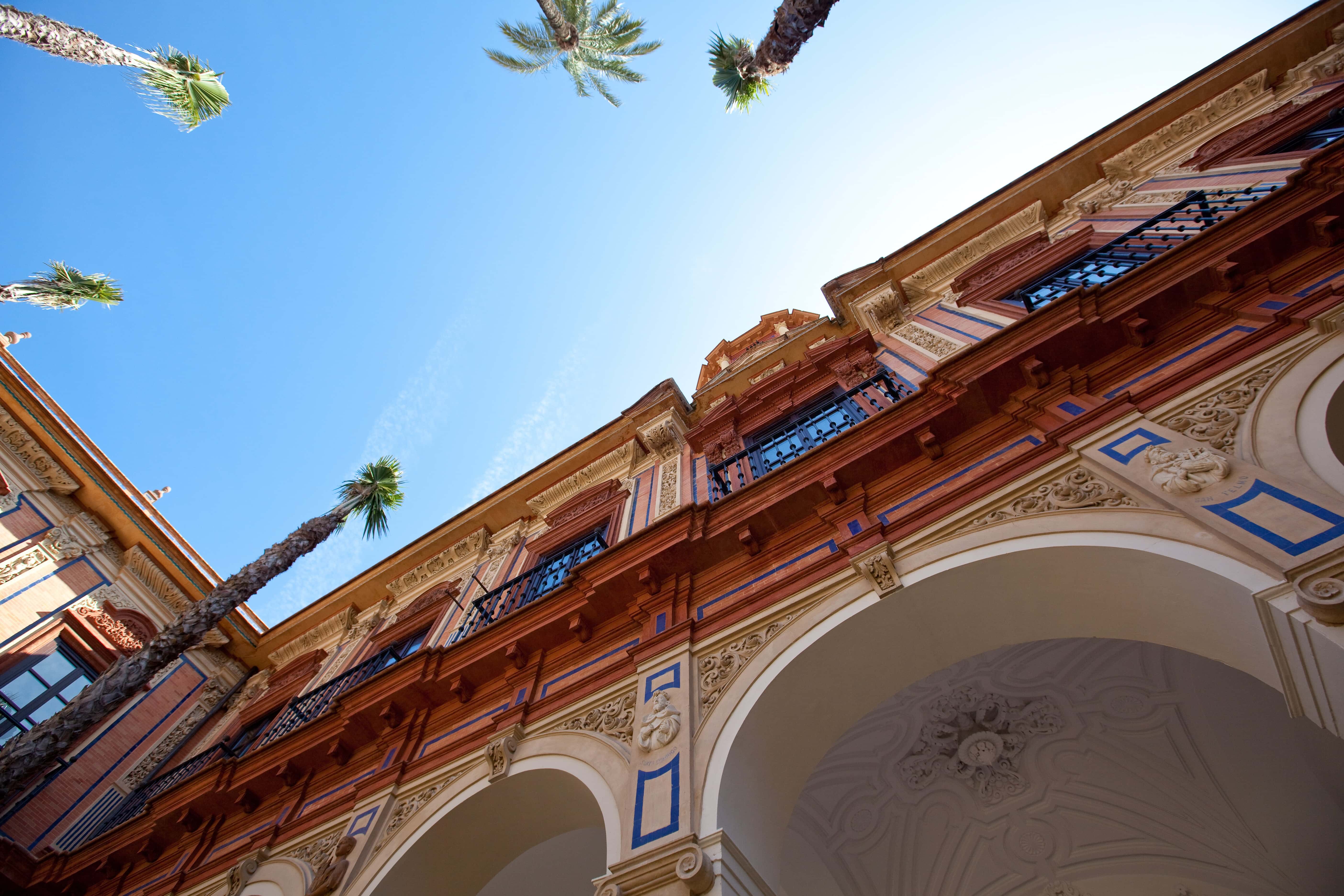
Refurbishment of San Telmo Palace, Seville
El corazón de la Plaza Mayor
La Plaza Mayor es uno de los espacios más reconocibles de Madrid. Es una parada obligada en cualquier visita a la capital de España. La actual configuración de la plaza tiene su origen en el siglo XVI, cuando Felipe II encargó la remodelación de la entonces plaza del Arrabal. El proyecto comenzó con la construcción de la Casa de la Panadería, que contrasta con el resto de edificios por los frescos de su fachada.
En 2015, Ferrovial Agroman acometió su restauración: se repararon las cubiertas, sustituyendo toda la pizarra, y se recuperó la corona central de ambos los chapiteles, cuya estructura de madera y forros de plomo se encontraban en avanzado estado de degradación. Además, se intervino en la sala de bóvedas, para eliminar grietas y humedades y evitar las pérdidas de color y material cerámico.
Con esta intervención, el edificio más emblemático de la Plaza Mayor conservará su esplendor durante muchos años, al igual que el resto de espacios que hemos recorrido en este artículo.
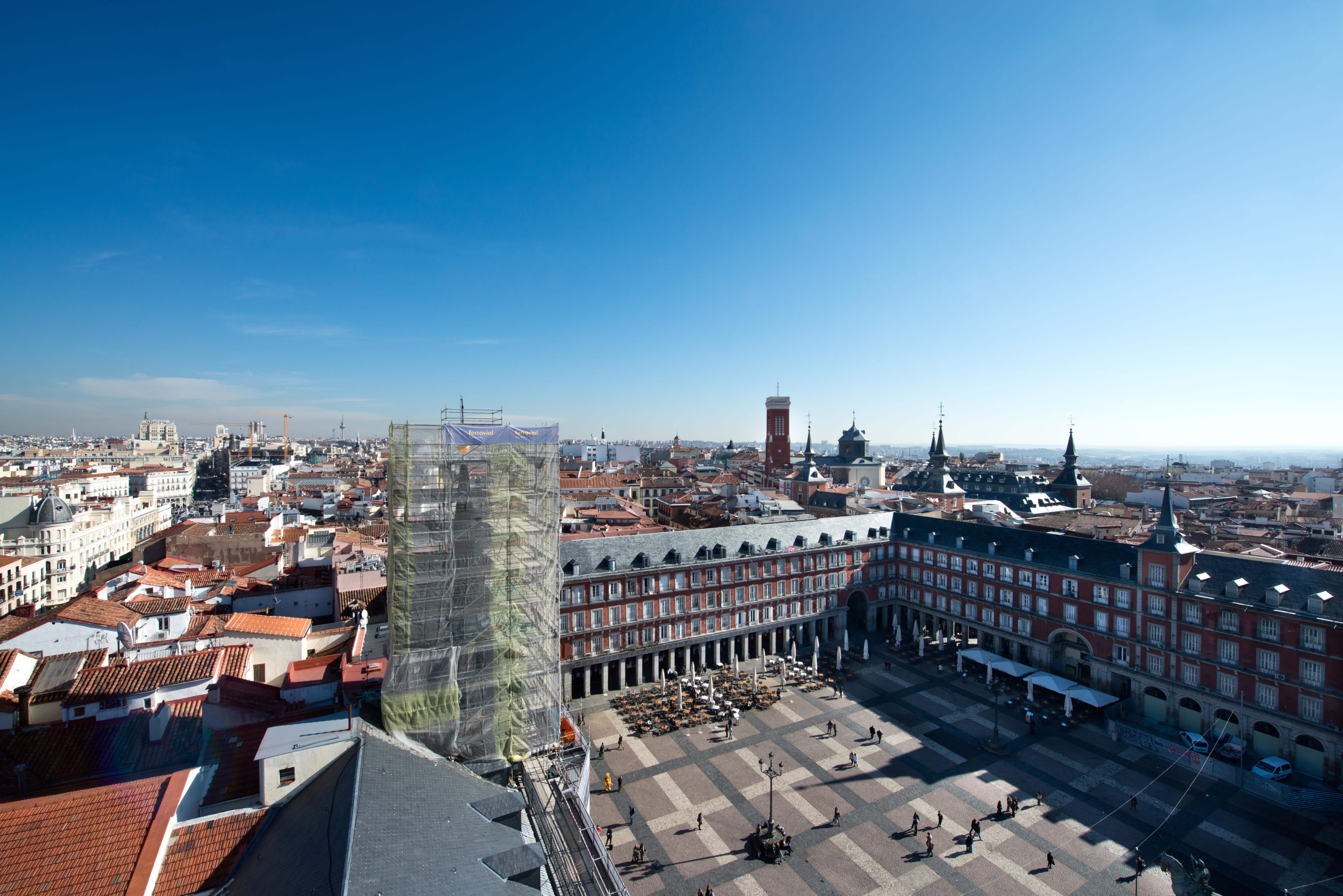
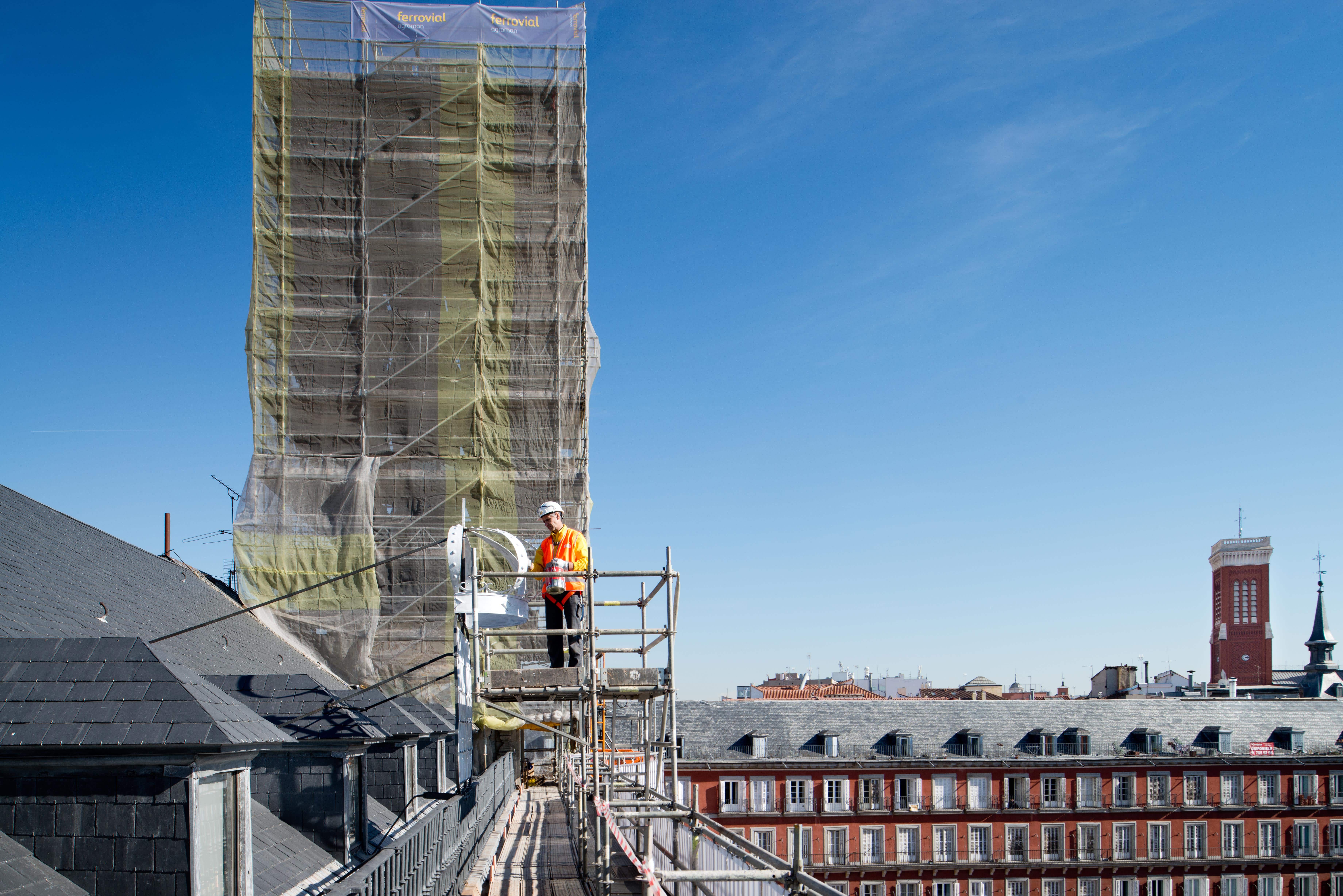
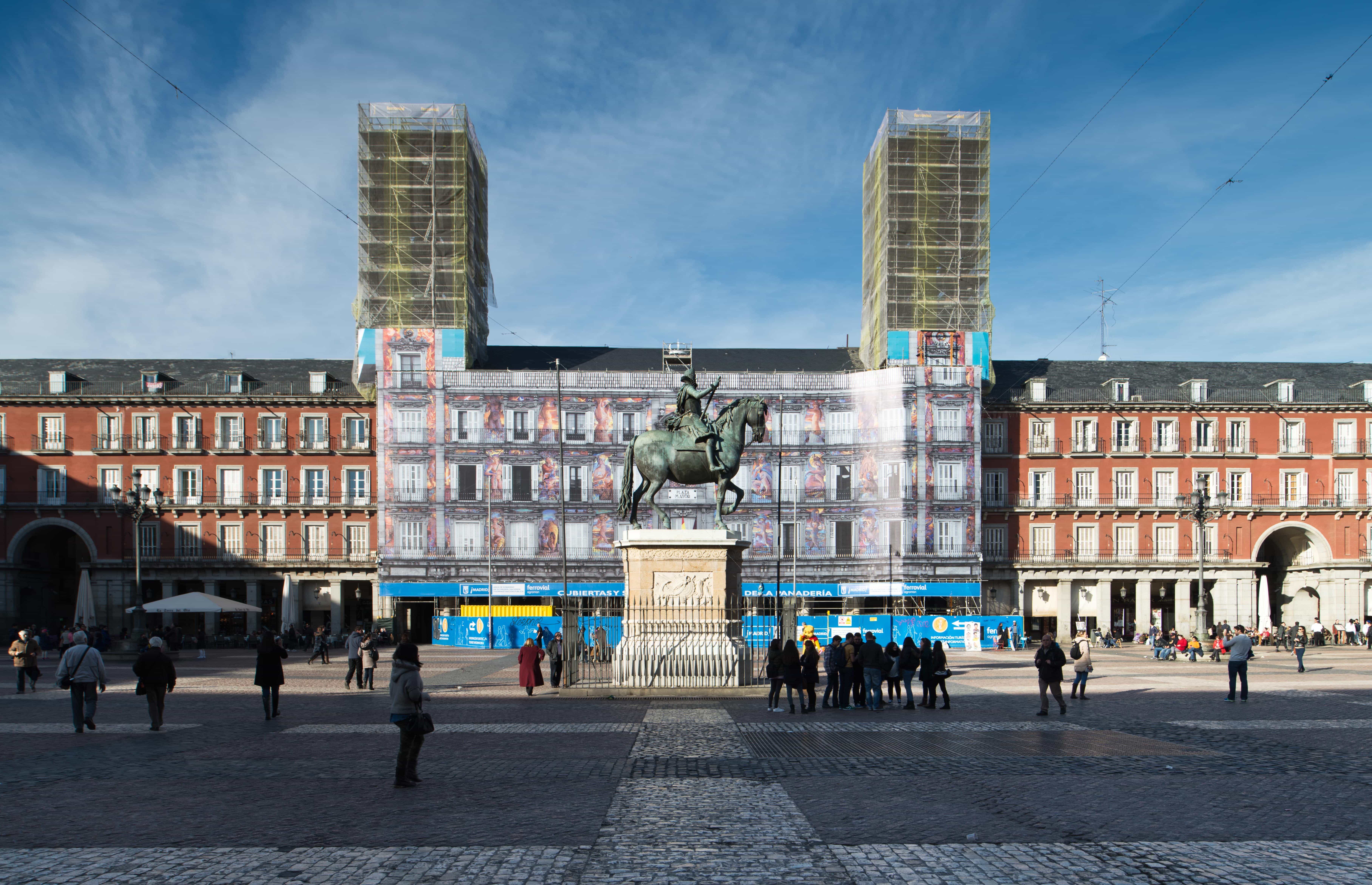
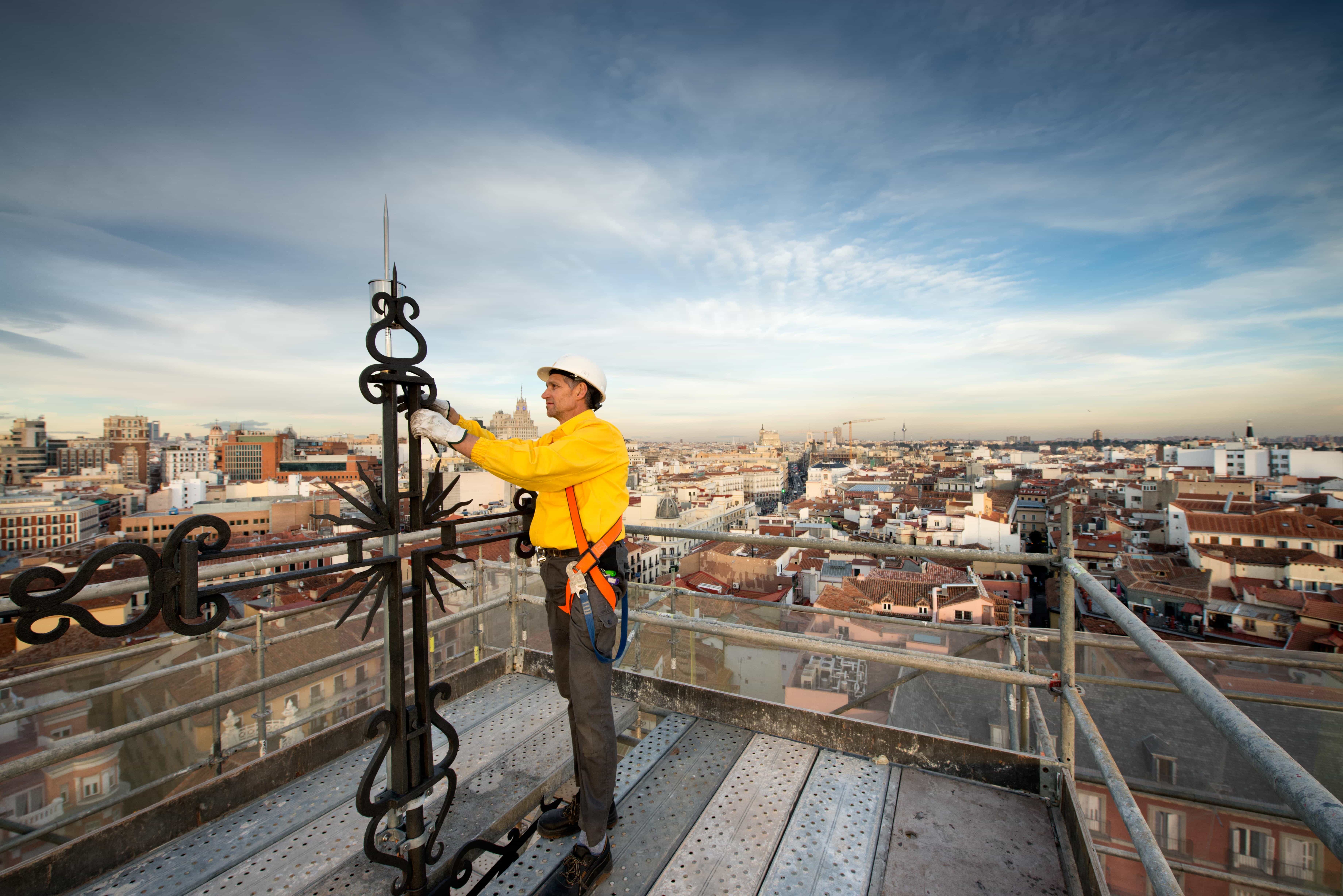
Refurbishment of Casa de la Panadería, at Madrid’s Plaza Mayor (Main Square)



